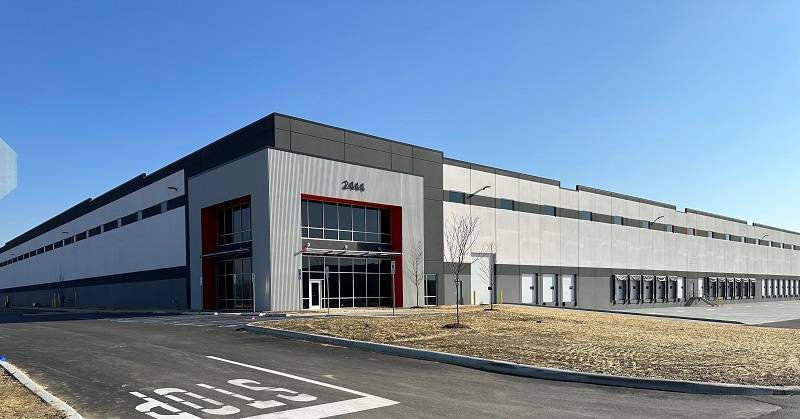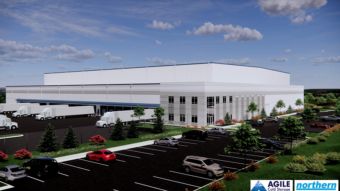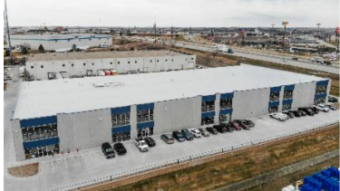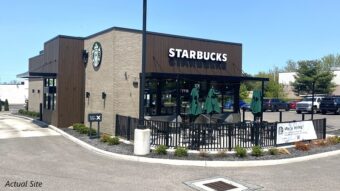The Indianapolis industrial market has been booming for years, recording more than 20 million square feet of net absorption during each of the last two years.
But this year? While demand for industrial space remains high in Indianapolis and its surrounding communities, industrial sales have plummeted. At the same time, developers have slowed their plans for adding new industrial space to the market.
To no one’s surprise, this stems from higher interest rates.
As the Federal Reserve Board continues to boost interest rates to slow inflation, commercial real estate sales have slowed in all markets and for all asset types. That includes industrial, the asset type that has long been commercial real estate’s top performer.
And in Indianapolis? Brokers working this market say that industrial sales won’t tick up again until the Fed stops tweaking its benchmark interest rate.
Alex Vulic, vice president of real estate development for the Indianapolis office of Opus Development Company, said that the slowdown that Indianapolis’ industrial market is seeing is no different from the struggles other sectors and markets are experiencing.
“Our industry, of course, is incredibly sensitive to interest rates in terms of how investors value properties,” Vulic said. “Higher rates do have a big impact. At this point, it’s uncertain when demand from investors will increase again.”
In good news, the demand for industrial space from tenants remains strong. Vulic said that the Indianapolis industrial market saw almost 5 million square feet of net absorption during the first quarter of this year.
Retailers continue to rely on an omnichannel strategy, emphasizing both brick-and-mortar and ecommerce sales. To make this work, they need to deliver their products to consumers quickly when these shoppers buy them online. Because of this, retailers need warehouses across the country, including in markets such as Indianapolis that benefit from their prime location in the center of the nation.
“I don’t see this changing post-COVID,” Vulic said. “We are seeing a continual conversion to that omnichannel approach. That will only continue. There are too many efficiencies for retailers to give up. Some people were sort of forced to try online shopping and delivery during the pandemic. Many of them discovered that they liked it. COVID forced the issue and it is going to stick.”
At the same time, a growing number of companies are reshoring manufacturing jobs back to the United States. That, too, is boosting the demand for industrial space. And the rise of new industries, such as a surge in the production of electric vehicles, has provided yet another boon to the industrial market.
The only hiccup today remains the slowdown in industrial sales.
“We are in a slow period when it comes to sales,” Vulic said. “Everyone is trying to figure out how prices are going to shake out. People want to know what the new cap rate is going to be based on what the new interest rate is going to be. Folks are waiting until the Fed stops raising rates to figure out their underwriting.”
Unfortunately, high inflation continues to linger. That has spurred the Fed to continue increasing its benchmark rate.
Until that changes, sales of all commercial real estate asset types, including industrial, will remain sluggish, Vulic said.
“It’s very difficult to enter into a purchase where you put debt on a property without knowing where the interest rate on that debt will be in six months,” he said. “Once that calms down, everyone can reset their underwriting expectations and get back to work. A lot of people are sitting back and waiting to see what is going to happen.”
While demand for industrial space remains strong, there are certain building types that are more in demand today, Vulic said. He said that tenants are still seeking industrial buildings of 600,000 square feet or less.
Those buildings that are 800,000 square feet or higher, though? The demand for these spaces in the Indianapolis market has slowed, Vulic said.
“Everyone is a little down in the mouth and concerned about 2023,” Vulic said. “But 2021 was a record year for the industrial market here when it comes to absorption. And 2022 was the second-best year here for industrial absorption. It’s not surprising that there might be a slowdown this year.”
Historically, the Indianapolis market has seen from 8 million to 10 million square feet of industrial absorption each year, Vulic said. That has changed. Now, Vulic says, he expects to see from 15 million to 18 million square feet of industrial absorption each year in the Indianapolis market.
And that’s something that should boost the morale of industrial brokers.
New construction numbers will probably be down this year in the Indianapolis industrial market, too. But that also isn’t surprising with the large amount of industrial square footage that has come online in the market during the last several years.
Opus has substantially completed two new industrial buildings totaling 1.1 million square feet in Mount Comfort, Indiana. But once those buildings are complete, Opus probably won’t start another new project in the Indianapolis area for the rest of this year, Vulic said.




